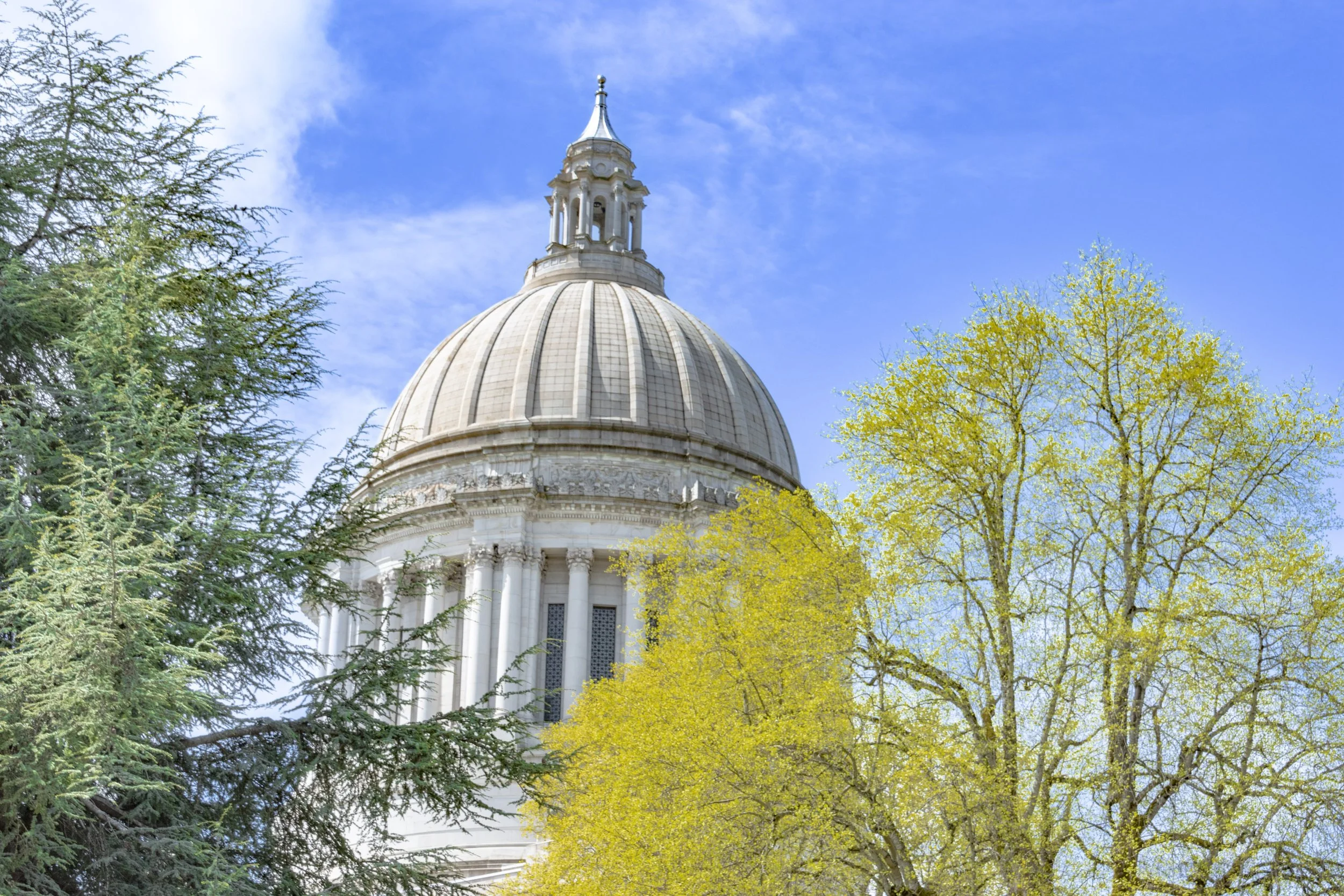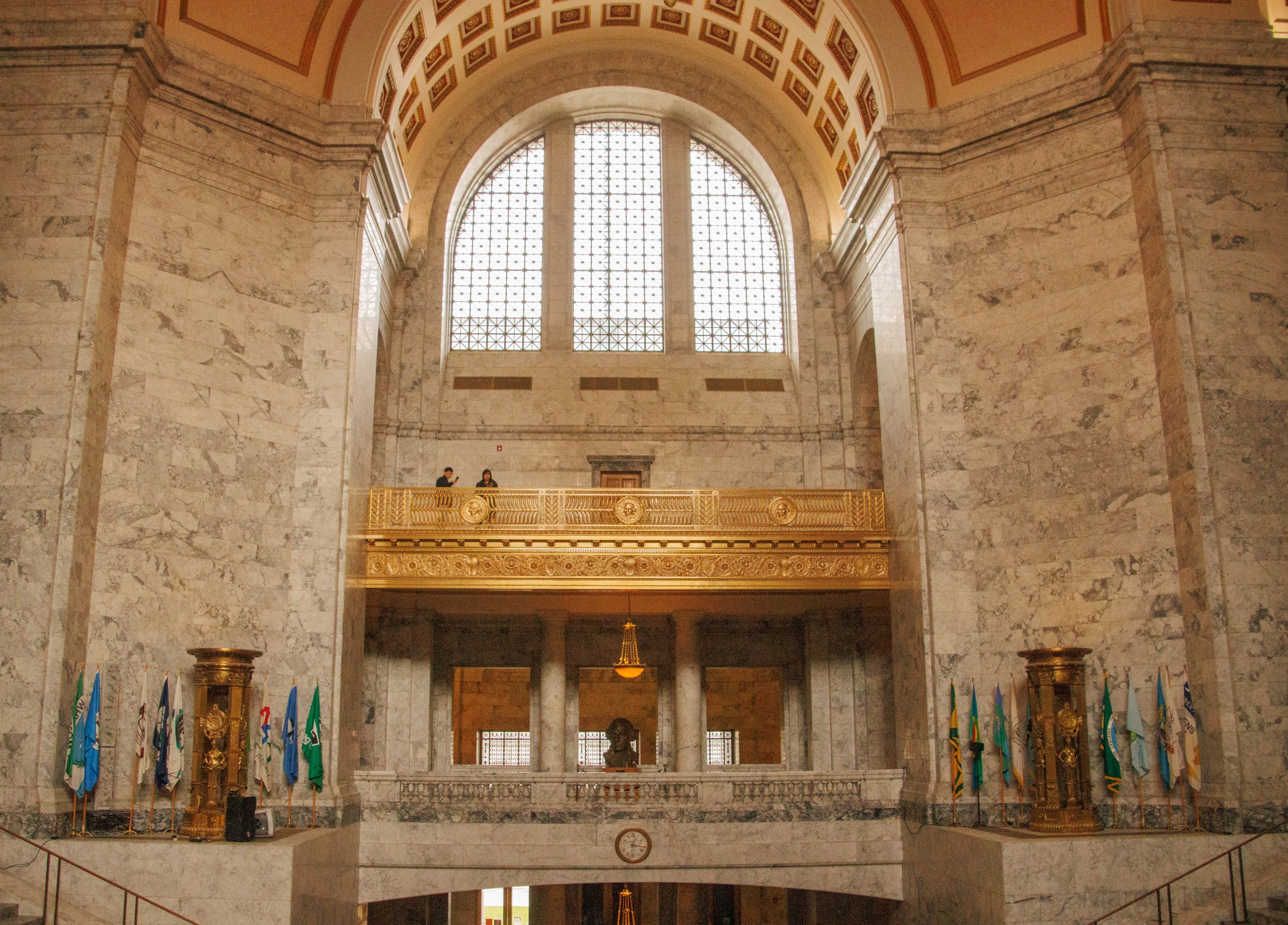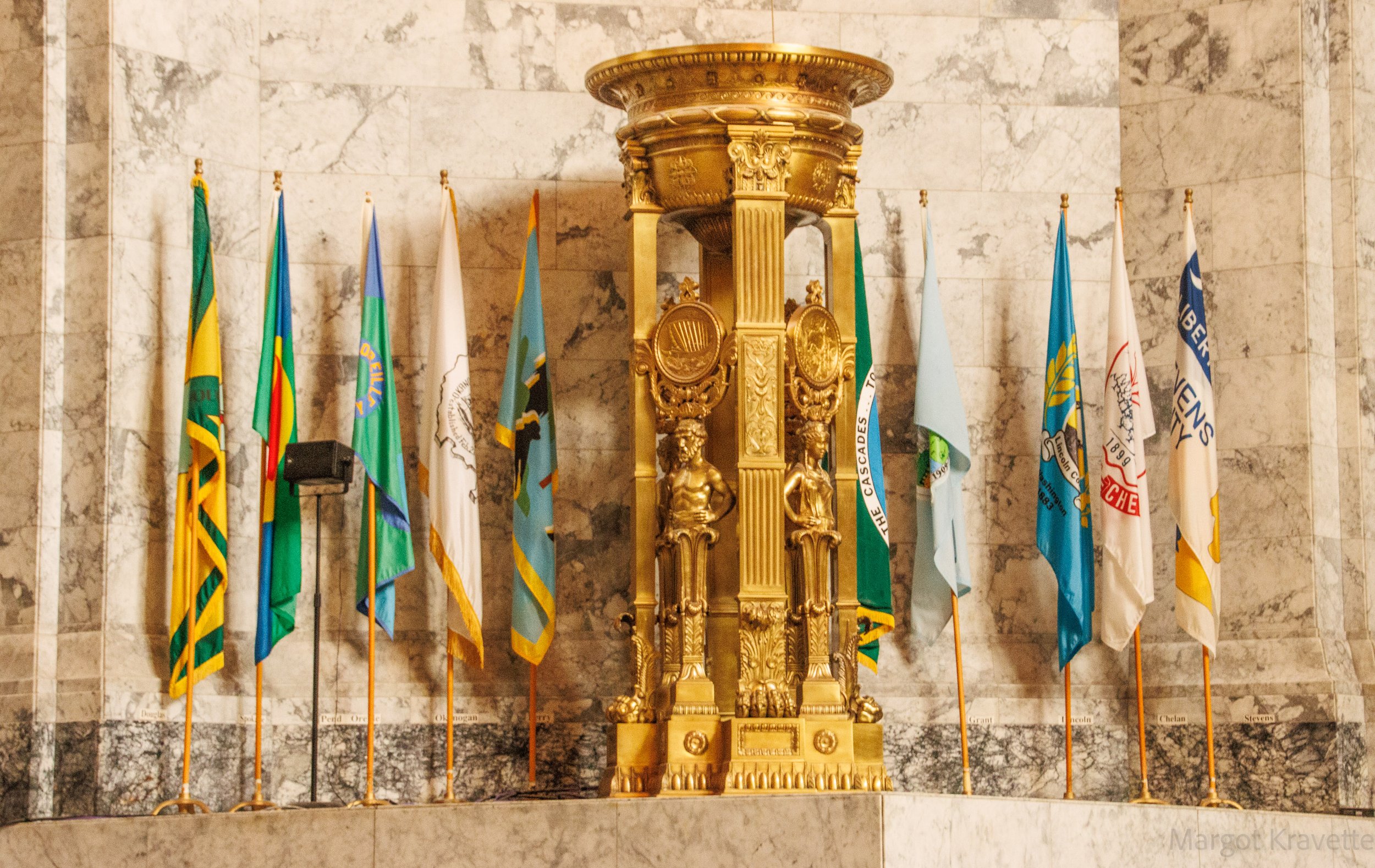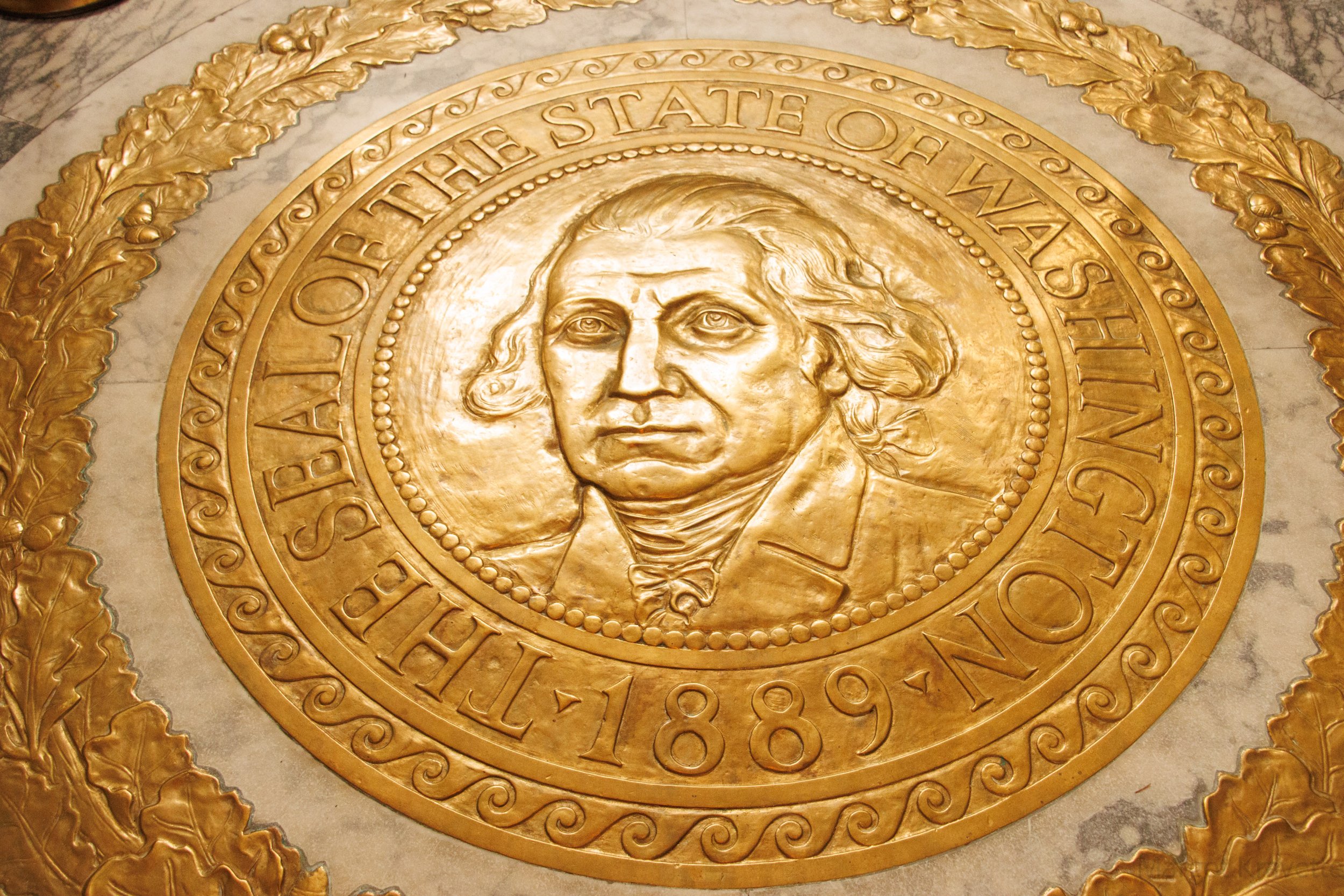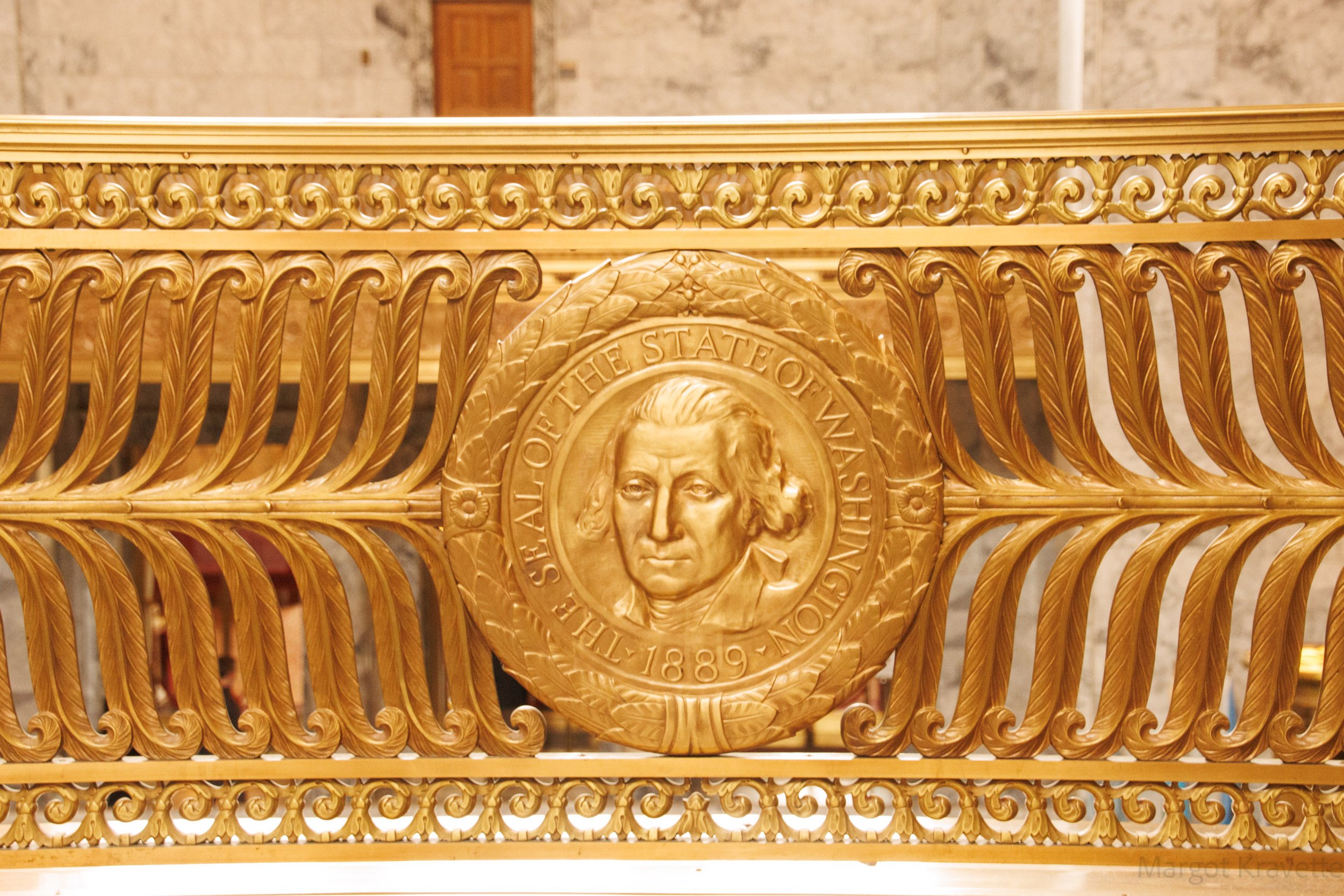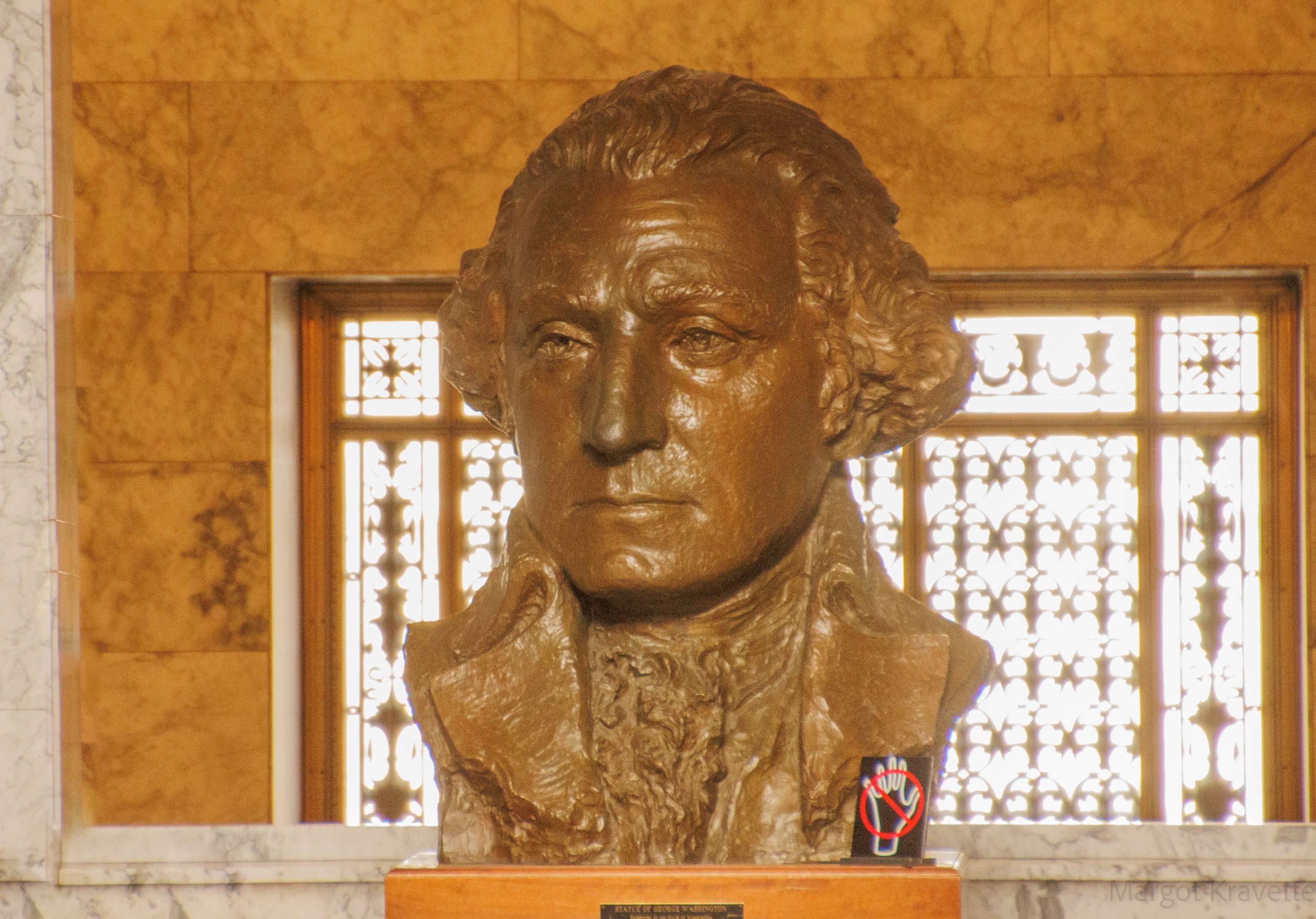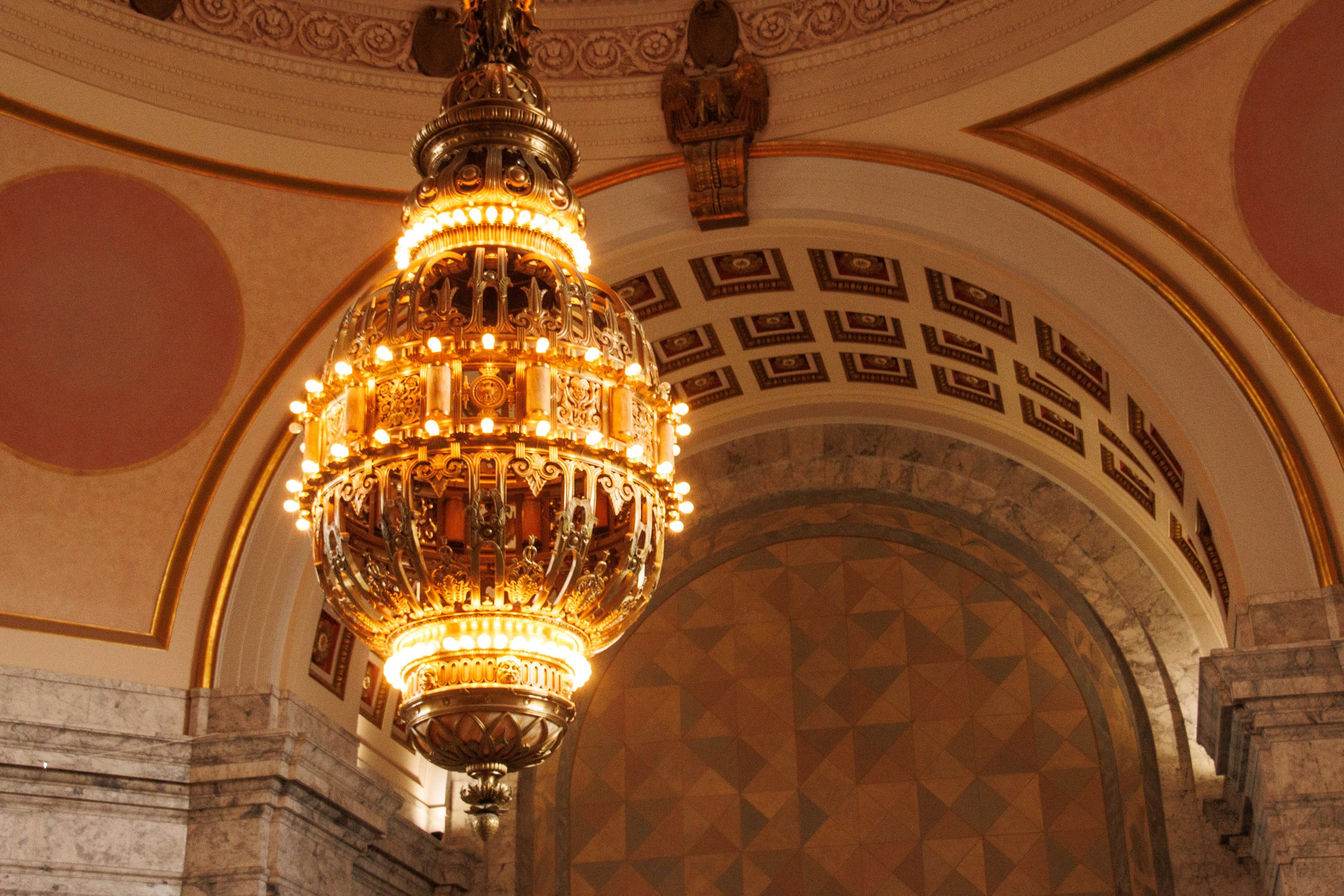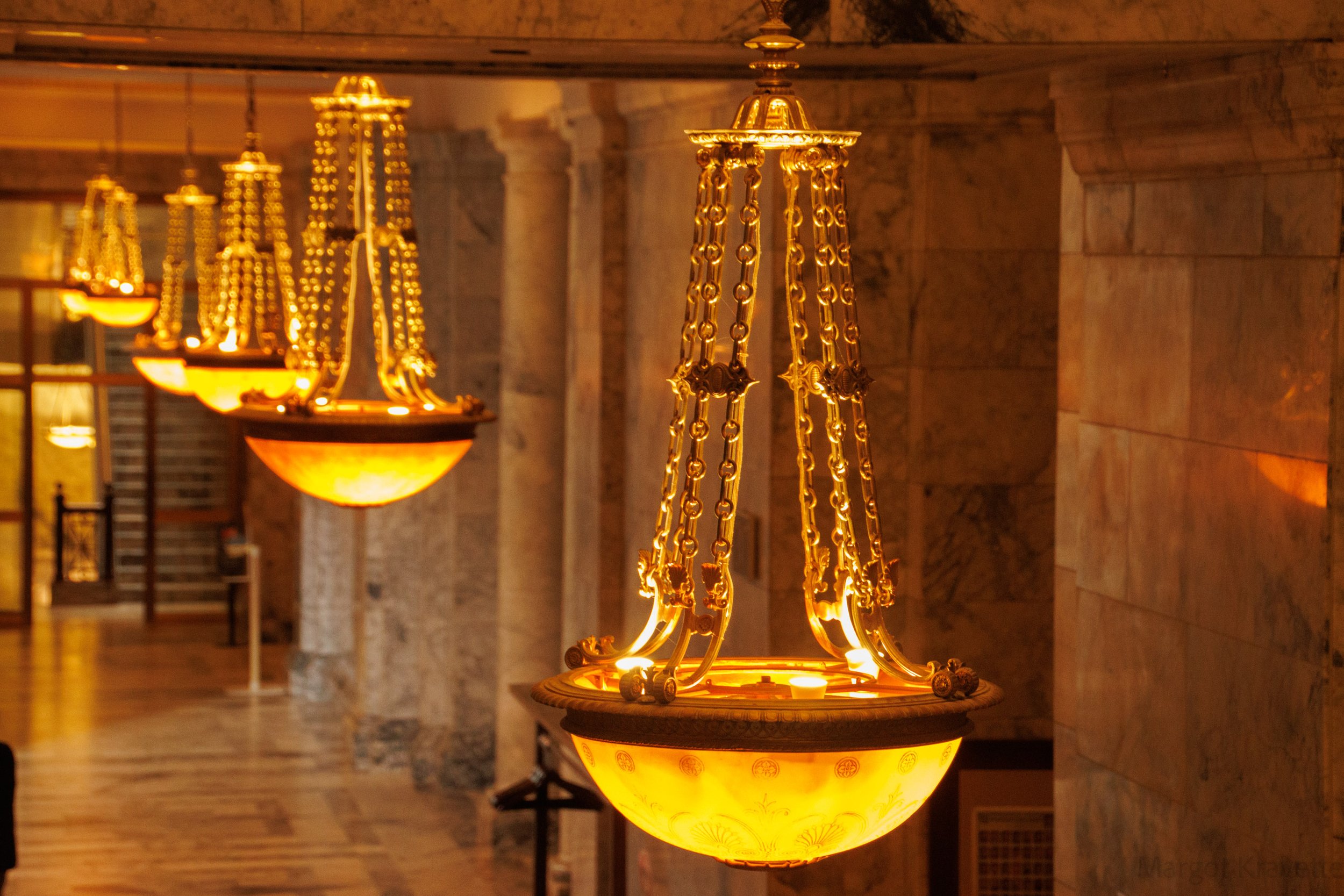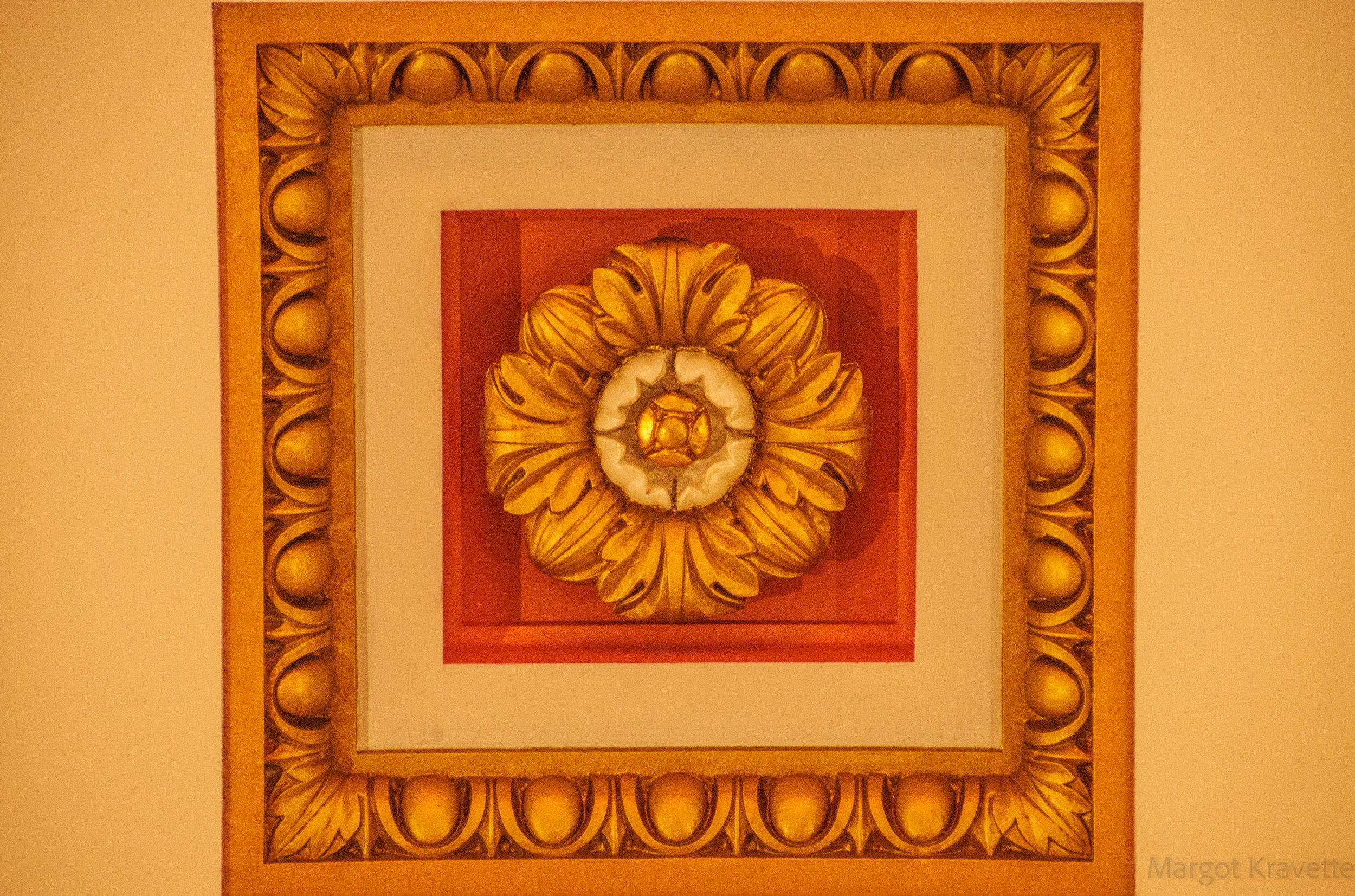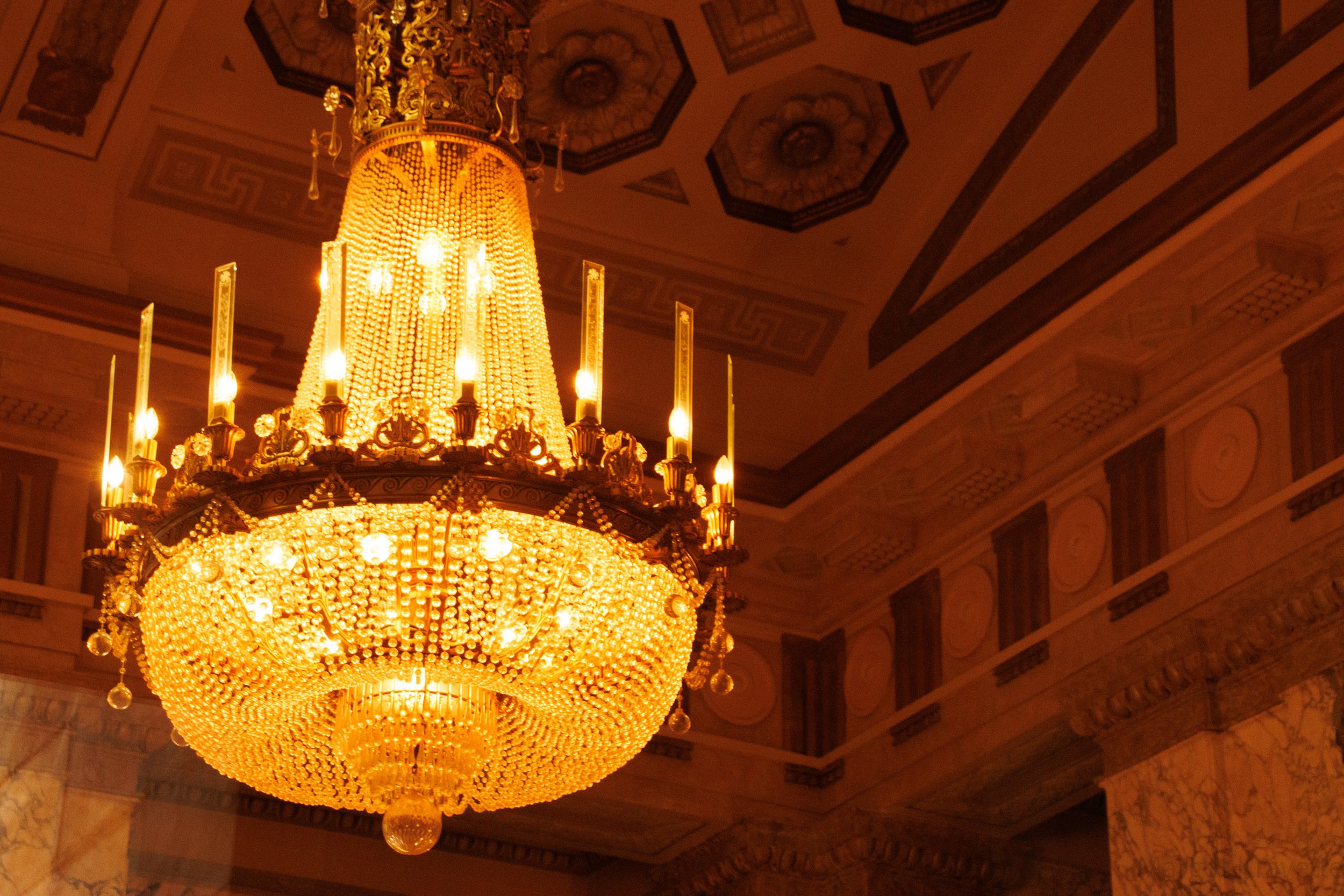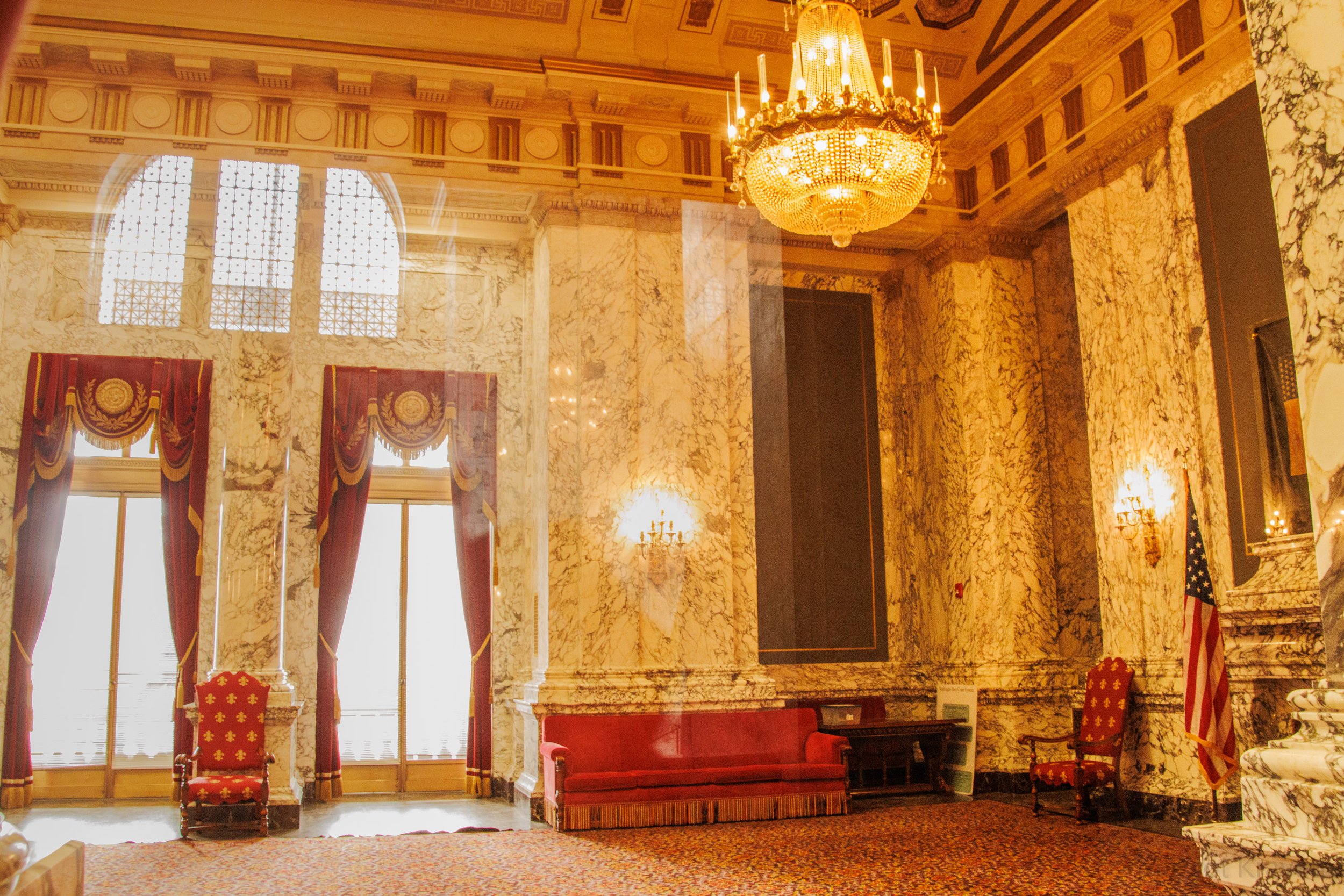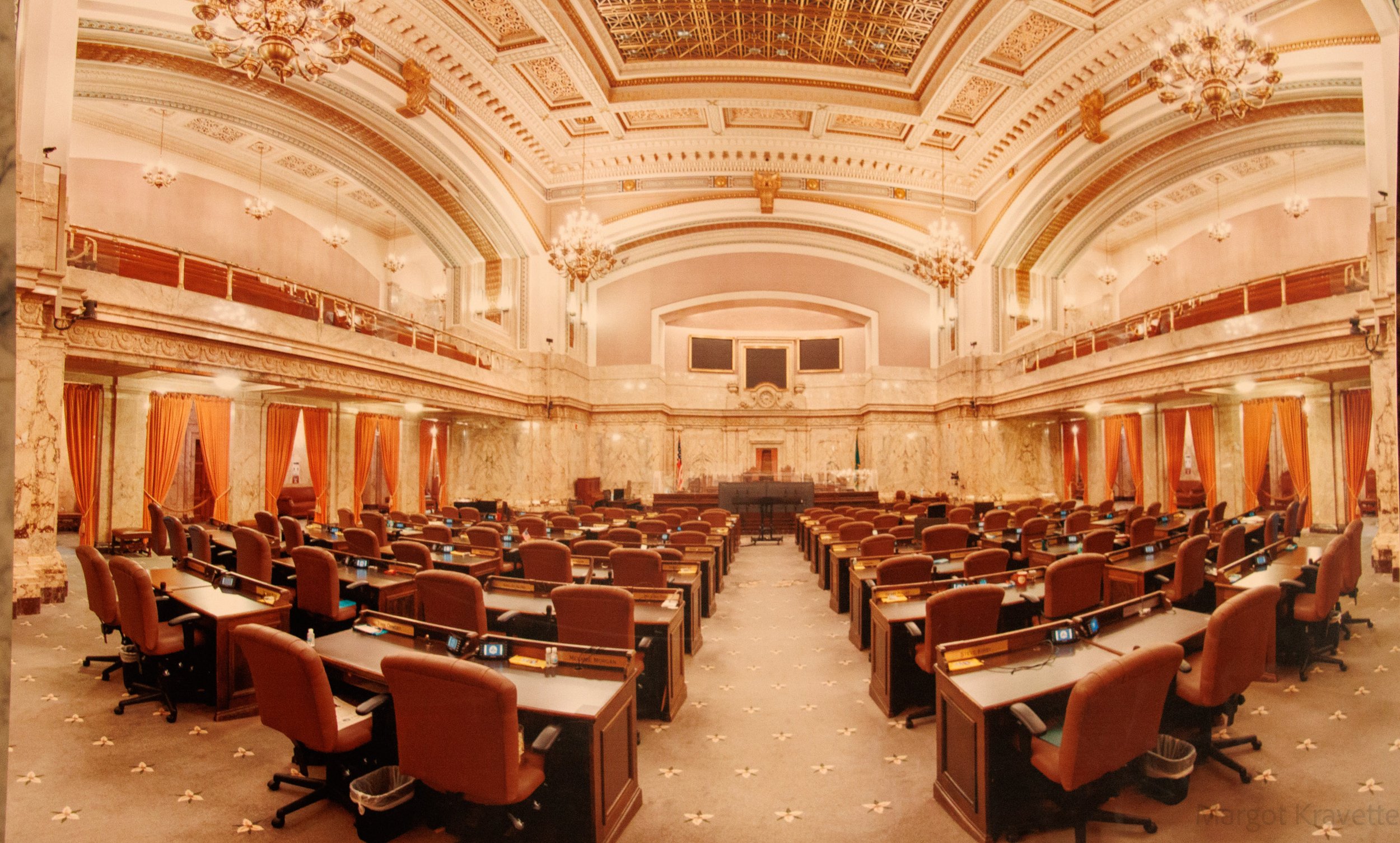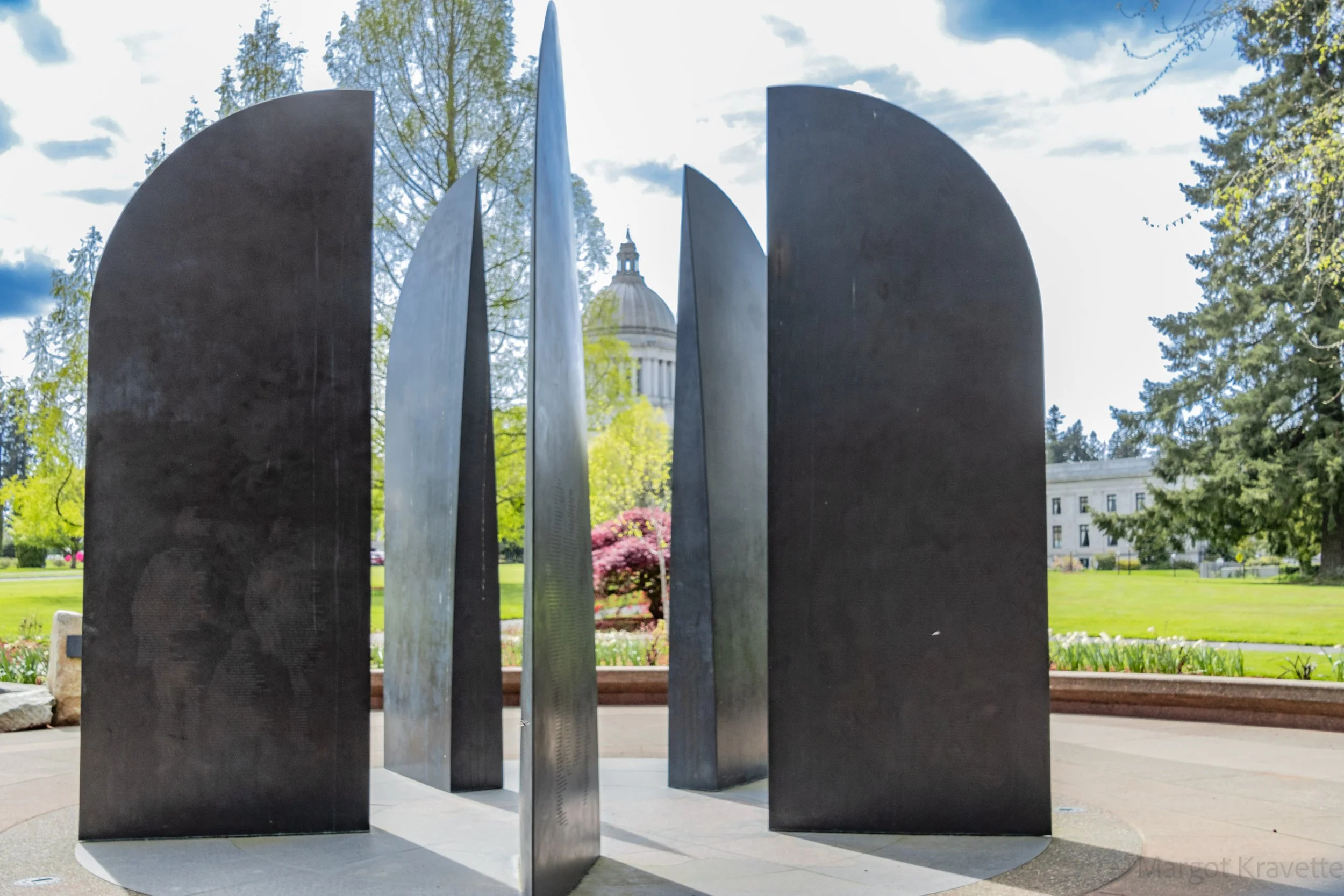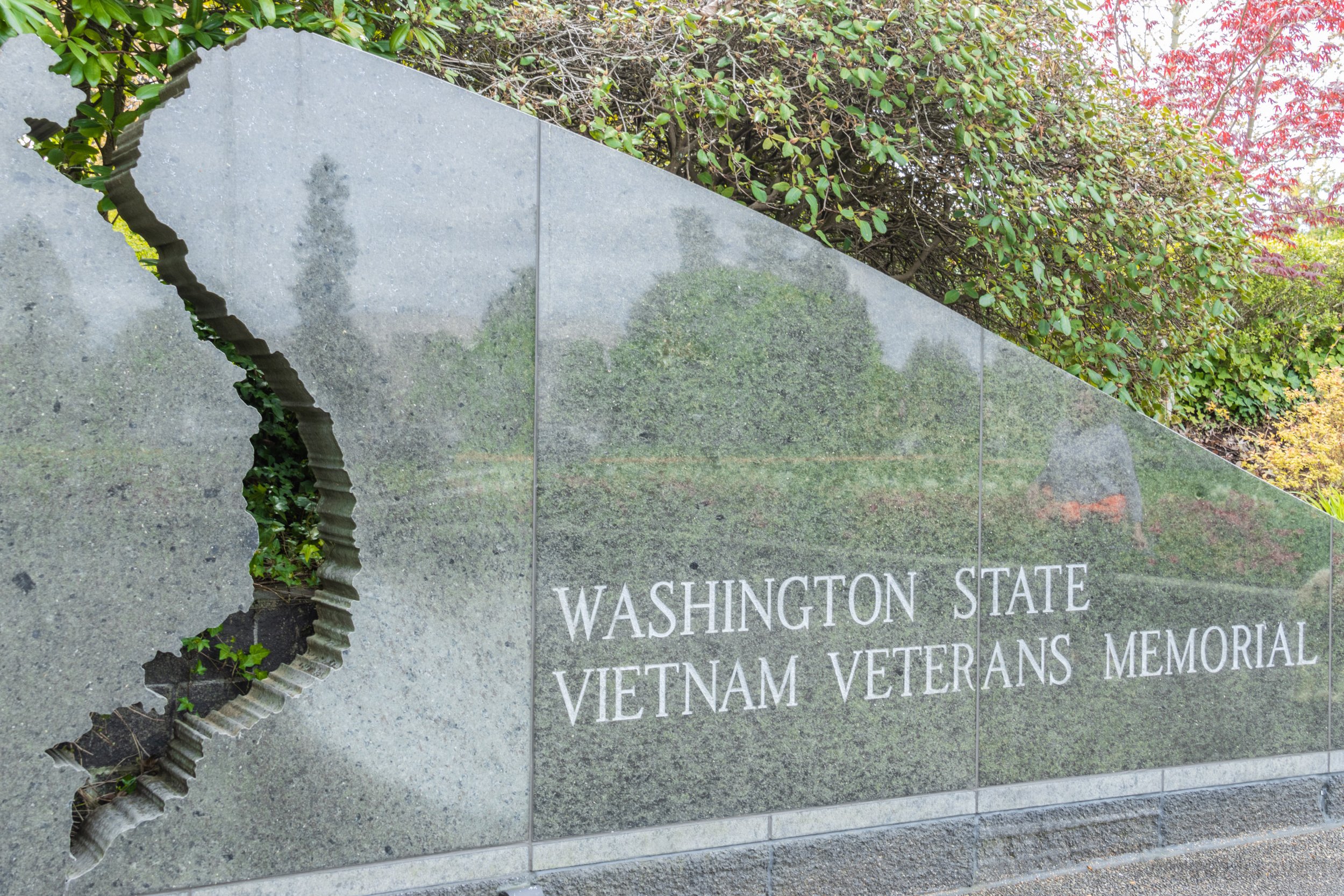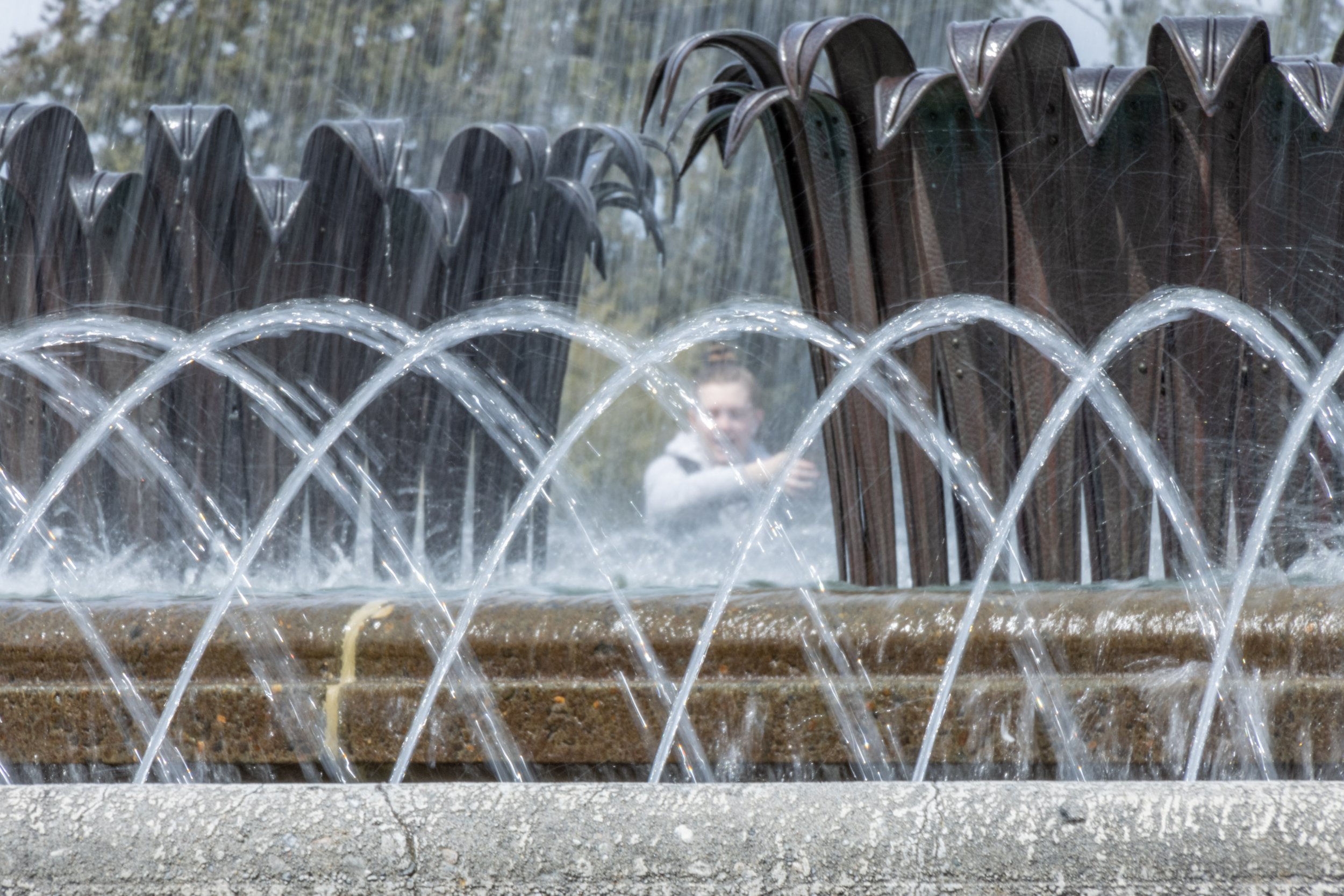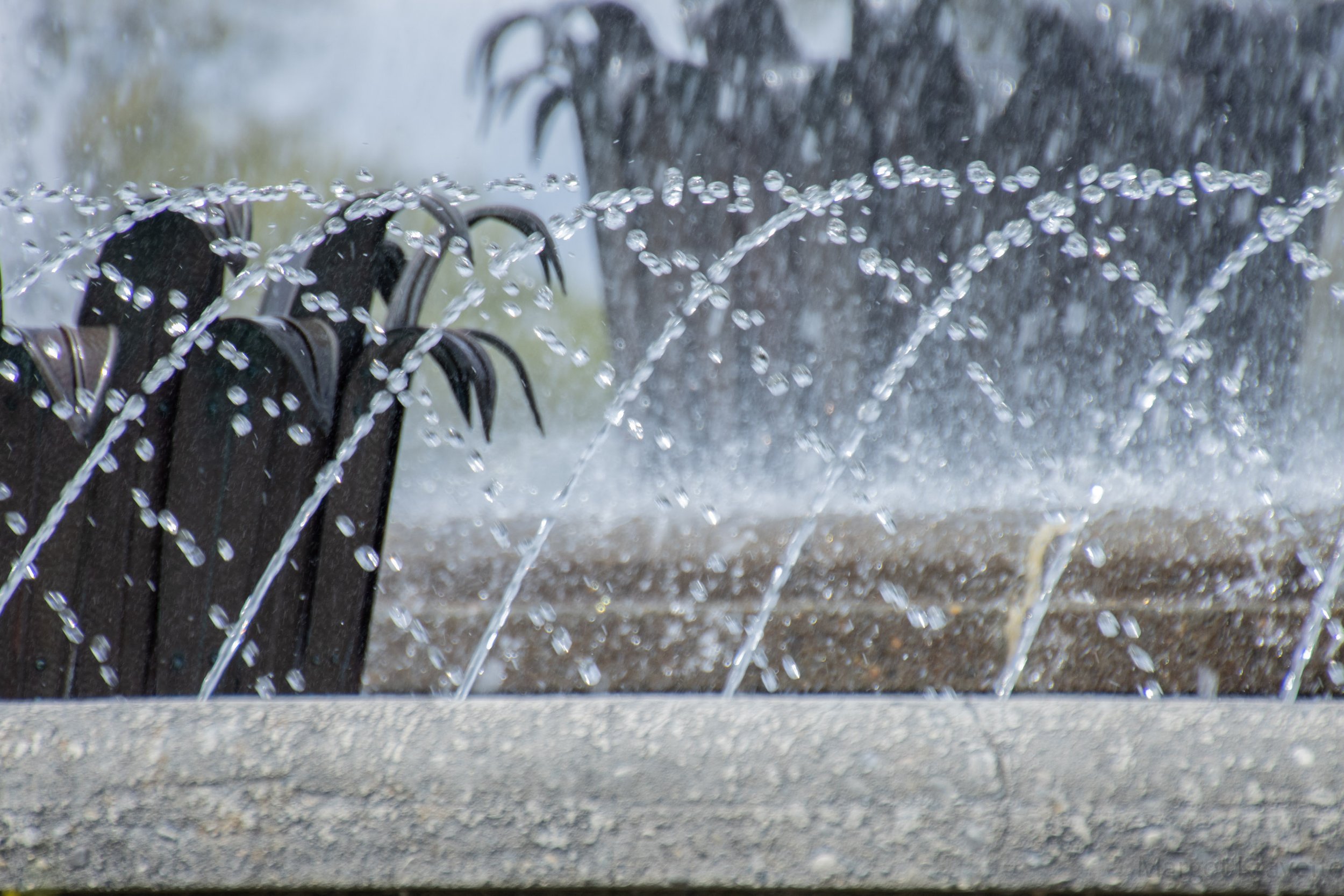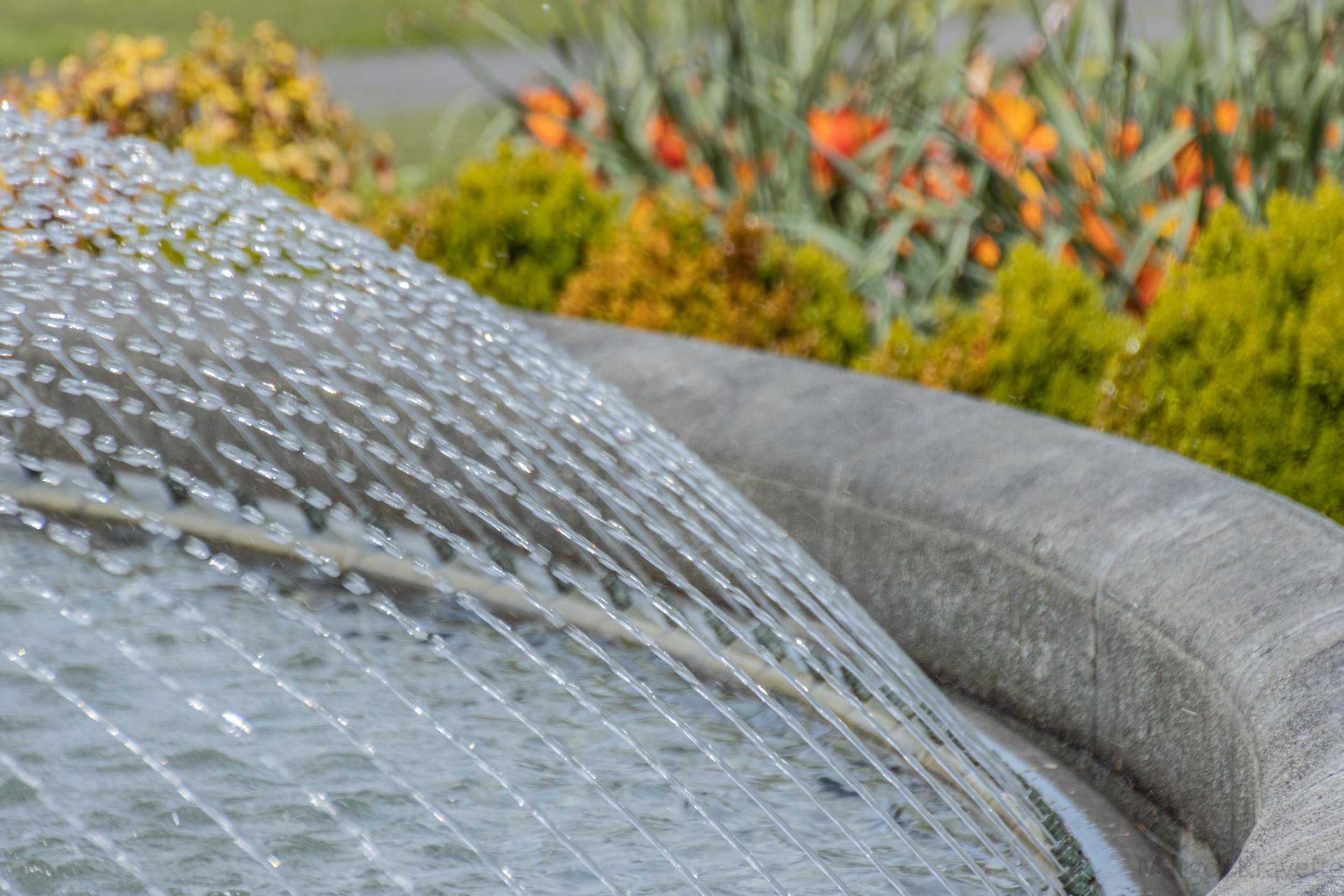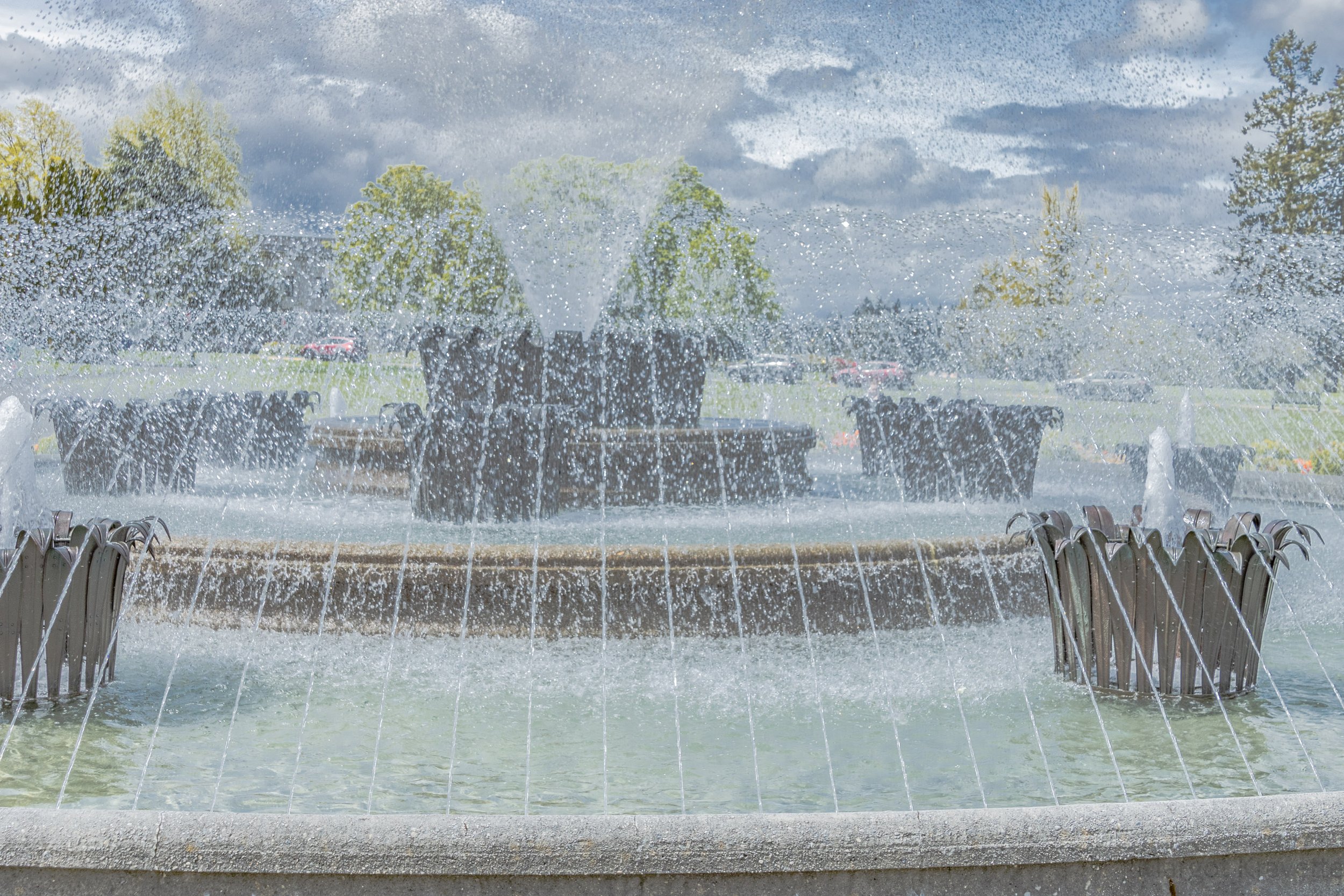Washington State Capitol Campus
Driving south on I-5 about 30 miles after passing Tacoma, the Washington State Capitol dome suddenly appears on your right as you head toward Olympia, the state capitol. That dome, at 287 feet in height, is the tallest self-supporting masonry dome in the United States, and the fifth tallest in the world. Only St. Peter’s Basilica in Rome, St. Paul’s Cathedral in London, and St. Isaac’s Cathedral in St. Petersburg surpass ours. The dome itself weighs 33,200,000 pounds, compared to the Space Needle at 19,000,000 pounds.
Washington State Capitol Dome
Legislative Building
The Legislative Building on which the dome sits, is one of five structures, named the “Capitol Group” by its New York architects Walter Wilder and Harry White, that were the first built on the current campus. These five, the Temple of Justice, the Insurance Building, the O’Brien and Cherberg Buildings (House of Representative and Senate office buildings), and the Legislative Building which houses the Senate and House Chambers and the executive offices of the Governor, Lt Governor, the Treasurer and the Secretary of State. Fifteen additional buildings have been added since that time.
Washington State Capitol Legislative Building
Washington became a U.S. territory in 1853 and became the 42nd state In 1889. After the legislative and executive functions taking place in several different locations, this Legislative Building was finally completed and occupied in 1928. The four-floor building’s exterior is covered in sandstone that came from Wilkeson, WA, and the 42 granite steps, corresponding to the state number, and the foundation came from Index, WA. The six large cast-bronze doors feature relief images of early industry and scenic beauty in Washington State.
Rotunda
The main entrance, on the north side of the building, is on the second floor where the four executive offices are located. The Rotunda Floor, between the second and third floors, is the highlight of the building. It features a 5-ton bronze chandelier with more than 200 light bulbs. All of the lamps and Roman fire pots in the building were made by Louis Comport Tiffany, the son of Charles Lewis Tiffany, the founder of Tiffany and Company. Embedded in the floor of the Rotunda and in many other places around this and other buildings,, is the state seal which was designed by Olympia resident and jeweler Charles Talcott. On the four corners of the Rotunda floor are four brass statuesque lamps, flanked by U.S, state and other flags.
The ground floor, otherwise known as the first floor, has a Visitor Services Office, a Legislative Information Center, and Gift Shop and a Café. The third floor has the House and Senate chambers as well as the State Reception Room, and the fourth floor has the galleries to the House and Senate chambers, all of which were closed to visitors. The photo of the Senate below is of a displayed photograph.
Washington State Capitol Campus
The Campus
The 486 acres of the Capitol Campus, originally designed by the Olmsted brothers, known for designing Central Park in New York City, the US Capitol groups in Washington, DC, and 37 parks and playgrounds in Seattle including Volunteer Park, Discovery Park, Seward Park and Green Lake. Our state capitol grounds are filled with much more than buildings, but with gardens, greens, ponds, fountains, parks, trails and 18 major art installations, many of which recognize some of the most historic events in our state and national history.
Korean War Memorial
Washington State Korean War Memorial
After strong advocations from veteran’s organizations, in 1989 the Legislature authorized the first Korean War Memorial with the purpose “to express the gratitude of the citizens of this state for all who served in Korea, and to project the spirit of service, willingness to sacrifice, and dedication to freedom in remembering those Washingtonians who lost their lives in the war.” Five hundred thirty two Washington State soldiers lost their lives in what was known as the “Forgotten War”. The memorial was dedicated in 1993, just short of the 40th anniversary of the end of the war.
Washington State Capitol Temple of Justice
Temple of Justice
The Temple of Justice, completed in 1920, was the first of the five original buildings to be constructed on this campus. The need for space was so critical that even during its construction, the Supreme Court started hearing appeals from the Superior Court. The building was damaged in the 1949 earthquake and again in 2001, despite a two-year seismic improvement project completed in 1989. In both incidents it was returned to its original condition.
Washington State Capitol World War IIMemorial
World War II Memorial
The World War II Memorial is one of my favorites; I love how variety of materials are incorporated into a display of many parts. Dedicated in 1999 it was one of first memorials in the country to acknowledge the significance of the war on its citizens. Washington State had six thousand casualties and the names of each is displayed on a brick, all of which define the boundary of the memorial. The names are also etched into one of the 14 foot high bronze blades, in the shape of a mother holding an infant, symbolizing future children that were not born because of the losses that occurred during the war. Five of these blades are clustered and shaped in a way that mirrors the dome of the Legislative Building sitting directly behind. Near the blades is a winding river of 4000 stalks of wheat, originally representing the state casualties. After the creation of the stalks 2000 additional names became known, so the 4000 represent all Washington state casualties. Each stalk is made from melted torpedo railings used on old U.S. warships, donated by the Bremerton Naval Shipyard. Born in 1959, the Olympia artist, Simon Kogan, an immigrant of Russian descent, always dreamed of creating a piece of art commemorating World War II because the war had affected him and his family so personally.
Washington State Capitol World War II Memorial
Vietnam Veterans Memorial
This memorial is actually the second one to be erected recognizing the Vietnam casualties. The first was a scroll, encased in marble, but the Vietnam veterans were unhappy with that piece because the encasement made it look like the people were entombed. The new memorial, recognizes the men and women that died in Vietnam as well as those missing in action. The names are etched on a green marble semicircle wall covering forty-five feet, each with a small hole to place memorances that are collected and kept in the state archives. At the midpoint of the wall is a cutout of an outline of North and South Vietnam. There are several inscriptions on the wall including these meaningful words: “We honor and recognize their pain and suffering, but above all we respect the courage of these Washington State residents.”
Washington State Capitol Winged Victory Monument
Winged Victory Monument
The Winged Victory Monument, by Washington resident Alonzo Lewis and completed in 1938, honors the men and women of Washington State who lost their lives in World War I. The 12 foot tall sculpture features Nike of Samothrace, the goddess of victory at war. Standing behind her are life-sized figures representing the Army, Navy and Marines and a Red Cross nurse. Nike appears to be holding an olive branch of the heads of the four figures. The sculpture was dedicated on Memorial Day, May 30, 1938.
Washington State Capitol Woman Dancing
Woman Dancing
Woman Dancing, along with other art pieces was funded by the state’s “1% for the Arts” program. Between 1961-1976, 1% of the construction costs public education and state buildings was allocated to for art in those building. In 1974 a new program, “Art in Public Places” allocates 1/2 of 1% for Art Program for state agencies and public schools applies to new construction, and 1/2 of 1% for Art Program for universities and colleges, in addition to new construction, includes renovation projects exceeding $200,000. Washington’s program is the second oldest percent for art program in the nation and is one of only four to include the public school system in their programming.
Untitled Stainless Steel
Another piece that was funded by the 1% for the Arts, this time for the construction of the Transportation Building, the Untitled Stainless Steel was dedicated in 1973 and created over five years by Lee Kelly, an artist whose work is displayed around the Pacific Northwest. There was some early resistance to the sculpture’s unusual shape, however it was eventually approved. Kelly describes the shape of his final product as, “the forms are simple in that everyone can ‘understand’ them. The mystery is in their interrelationships, the spaces they create, as well as the relationship to the building and plaza.”
Tivoli Fountain
In 1949 Peter G. Schmidt, Sr., president of the Olympia Brewing Company, on a trip to Copenhagen, Denmark, was taken by the Tivoli Fountain at the Tivoli Amusement Park, a replica of a 16th century fountain at the Villa d’Este in Tivoli, Italy. Recognizing that the Capitol campus had no water-art pieces, Schmidt decided that a fountain like that one would be appropriate for Olympia. He worked with the architect, Fritz Meyer, to obtain some of the parts to bring back to America, and Meyer arranged for the manufacture and shipping of remaining parts to Washington. Wohleb, Wohleb, and Bennet were the coordinating architects for the project. Olympia’s Tivoli Fountain was dedicated in April, 1953 and has brought beauty and enjoyment to the many people that both work at and visit the Washington State Capitol.
Washington State Capitol Tivoli Fountain
These are just a few of the many pieces of art and memorials on this beautiful campus that overlooks Capitol Lake. There are many resources on the State Department of Enterprise Services webpage that provides information about the buildings, memorials, and art in addition to all you need to know about visiting and touring the campus.


